After a stint at a San Francisco Bay Area winery and 15 years of working in a cruise ship as a cellar master, sommelier, and wine educator, Isagani Natividad is back in the Philippines, now as the in-house sommelier for La Petite Parisienne.
One of the sommelier’s core values, he tells Coconuts Manila, is that wine should be accessible to all. He himself fell into it accidentally while working in a cargo ship, when the captain invited him to sample some wine and was shocked when Natividad was able to easily describe the tasting notes despite never having been professionally trained to do so. This encouraged Natividad to study wine, which he did at Le Cordon Bleu in Orlando, Florida.
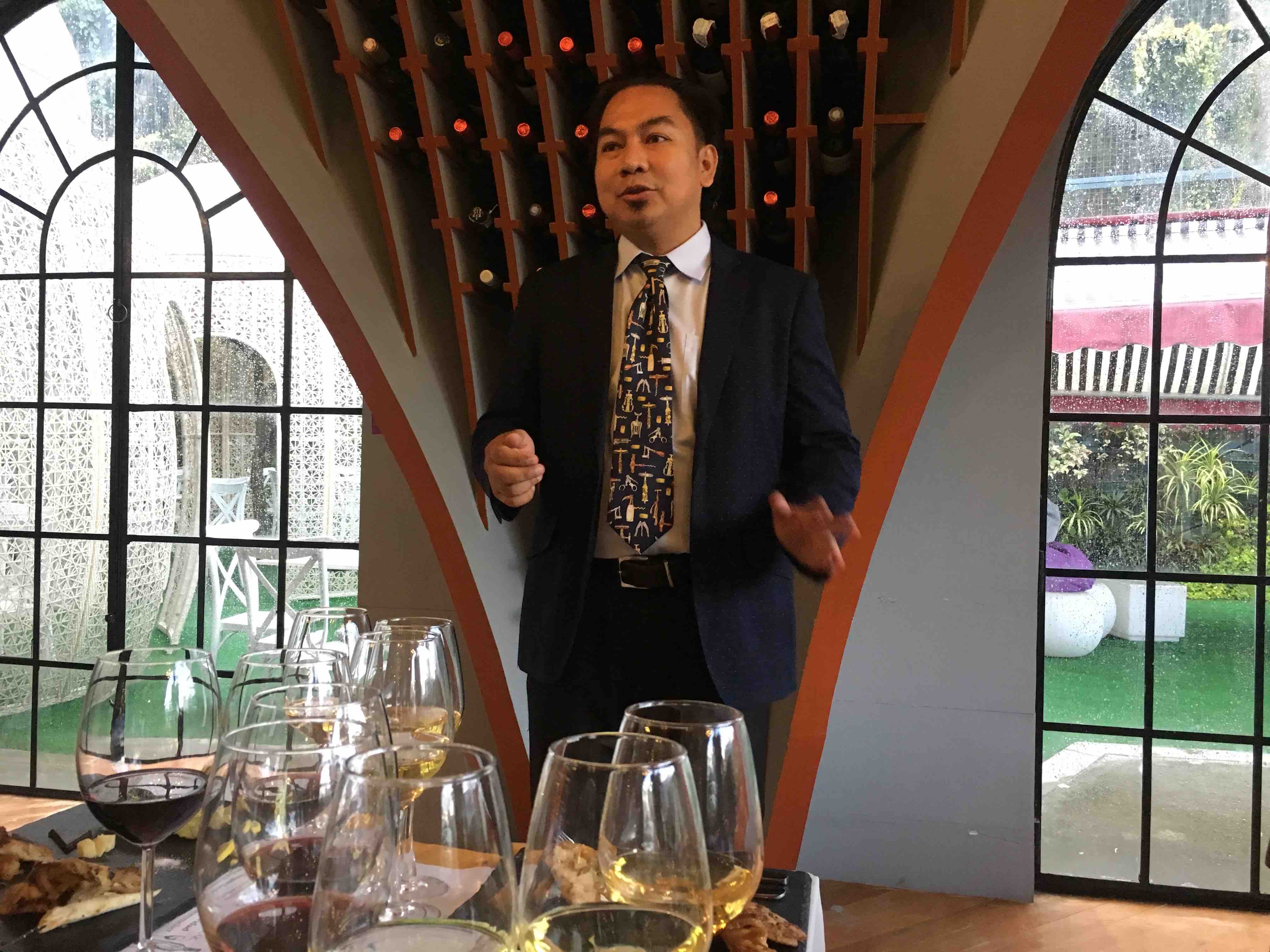
We recently visited the wine cellar’s branch in Quezon City’s Le Village Lifestyle Park to attend a condensed version of its Wine 101 & Food Pairing workshop. As its name suggests, Le Petite is a small wine cellar with about four tables that seat four to six people each. It offers wine imported from France, and each bottle is priced between PHP490 to 6,000 (US$9.03 to $110.57).
Apparently, both Natividad and La Petite share a philosophy when it comes to the presentation of wine: educate, don’t intimidate. Looks like we’re off to a good start.
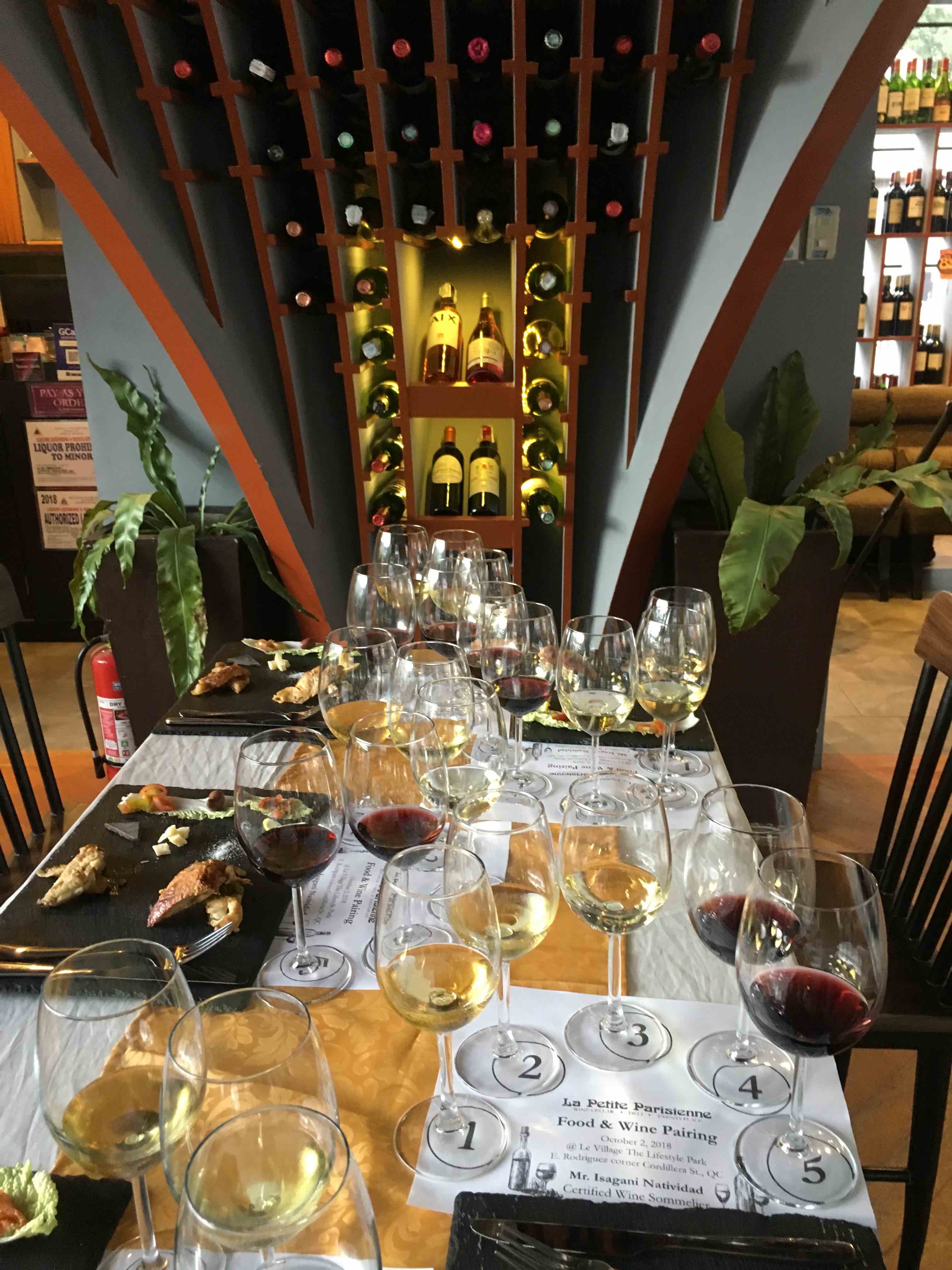
We were served five different wines — three whites and two reds — a Moscato, Sauvignon Blanc, Chardonnay, GSM, and Bordeaux blend.
With each glass, Natividad had us sip and savor the flavors and feel of the wine as he explained the distinct tasting notes within each. It was helpful to have a trained tongue like his to guide us on what we were experiencing — and as we went further into the exercise, your Coconuts crew got better at identifying the characteristics (this one’s acidic, yeah?) before Natividad confirmed it.
He also had us taste each one after nibbling tiny pieces of chicken, tomatoes, and chocolate from a platter. It was not meant to be an actual meal, Natividad explained. It was purely there for the practice, so that we could isolate the flavors of each food item and corral our tastebuds into sensing the complementary characteristics between the food and the wine.
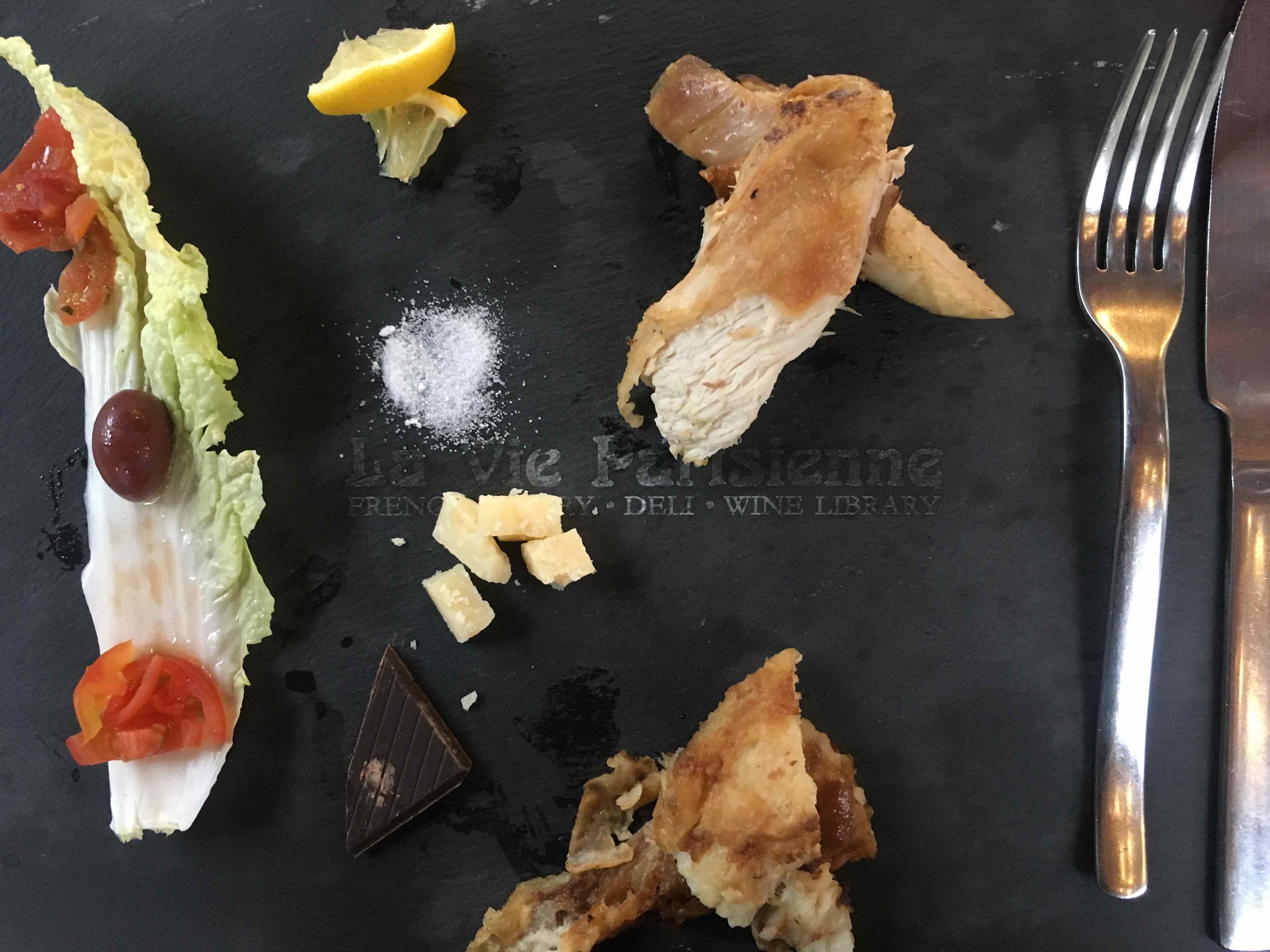
For example, the cherry tomato and lemon represented dishes high in acid, like pasta with marinara sauce. The kalamata olive took the place of a salty slab of steak, and the dark chocolate, of course, represented the flavor profile of dessert.
Natividad wove in lots of technical terms throughout the session, and amidst all the sipping, nibbling, and note-scribbling, we might have lost some of the jargon that was being thrown around — but we did manage to get the meat of the message. Here we go…

Main takeaways: Foods high in acid go well with wines with higher acidity. Same goes with acidic food and sweet wine. What doesn’t go well together, apparently, are acidic food with creamy wines, or vice versa.
In all honesty, we did have some difficulty distinguishing the nuances between each of the wines, but we gained enough insight into the complexities of wine, and it left us wanting to learn more.
And so, we asked Natividad. Here are the tips he gave us.
1) Do not chill (too much)
“I’m not going to say it’s a common mistake for the Filipino, but you’re gonna notice them when they order a bottle of red, they put it on ice to chill it well before they drink it. Actually, you can chill it in a quick period of time just to reach the right temperature,” Natividad said.
He noted that the “right temperature” for red wine is 18 to 21 degrees Celsius — room temperature in other countries, but this would warrant a short trip to the fridge here in the Philippines.
But it’s not the same for white wines.
“When a wine has so much acid like champagne or sparkling, Sauvignon Blanc, Pinot Grigio, or Riesling, it has to be really chilled …. because when you chill, it will reduce the acid.”
2) Age does matter
“Don’t buy young wine, not unless it is meant to be young. There are some wines that are meant to be [young], OK, you can enjoy young wine like that, but if you will buy a Cabernet, at least 3 to 5 years old, we should buy that. For you to see the difference of young and… a settled [wine].”
3) Yes way, rosé
“Rosé, as what we always mention, is a summer wine. It’s nice to chill it up with a nice chilled rosé, even [when] the sun’s up — it will reduce the heat in people’s bodies. Good thing with rosé — he can pair with a lot of dishes because he doesn’t have any character that will harm some dishes. It’s like it’s just neutral… You’re not gonna [go] wrong with rosé with any food that you’re going to do.”
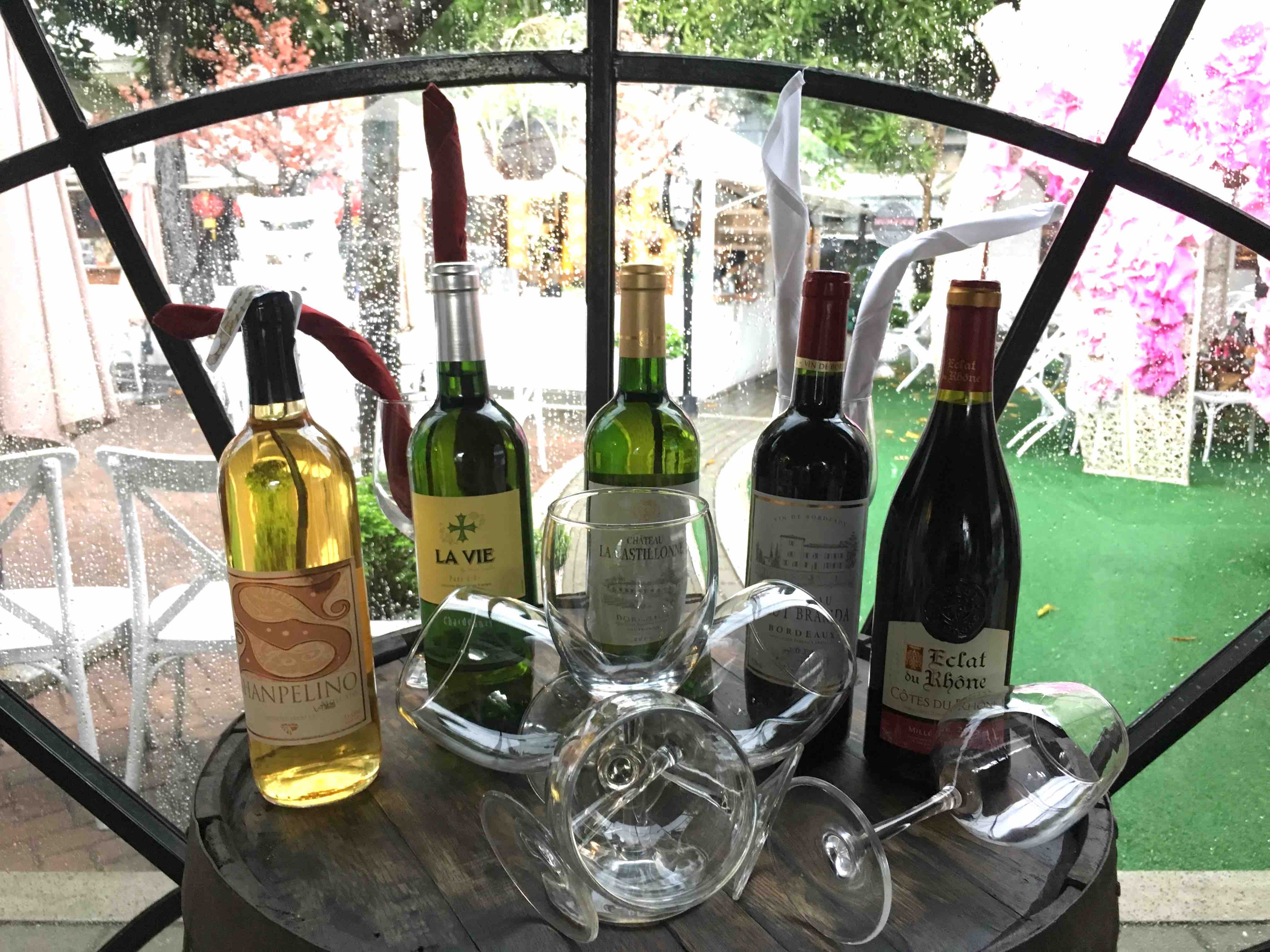
4) Good wine does not necessarily mean expensive wine
“You don’t need to buy the most expensive wine. Just look for a quality wine, good year, especially look if it has aged already… Chilean wine is not bad at all to enjoy but most of the time, those wines [are] for the beginners… but those who are already more well-rounded, they always look for Italian as well as French wine.”
5) Don’t stick to just one type
“Whenever you order wine, and when you try that it’s really good, next time you come back to that restaurant, never ever order that. Because if you keep drinking the same wine, same character that you really love most, you won’t be developed. Your palate won’t develop. Adjust it. If it is sweet, then the next time you will order, make sure that [the next selection is] reduced on sugar, or if it is red, make sure that… every time you order, adjust it like a little heavier… until you reach the sensations of earthy character.”
[*Editor’s Note: Parts of the interview have been translated from Filipino and edited for clarity.]
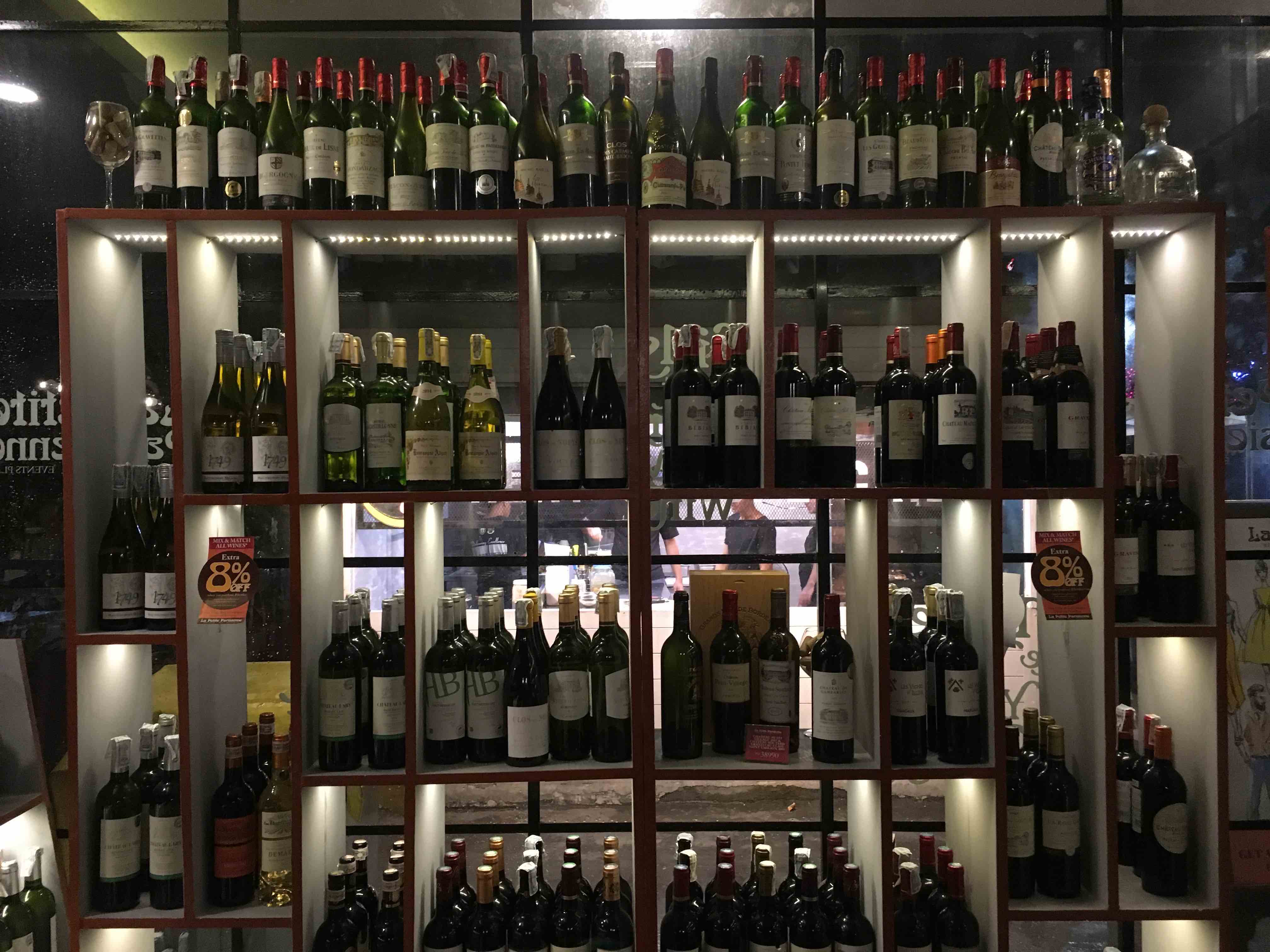
FIND IT:
Le Village Lifestyle Park, E. Rodriguez Sr. Avenue Corner Cordillera Street,
Tatalon, Quezon City
Other branches:
G/F, LPL Center, 130 Leviste Street, Salcedo Village, Makati City
G/F, Belmont Hotel Manila, Newport City, Pasay City
33 Sct. Madriñan St., Diliman, Quezon City





Reader Interactions